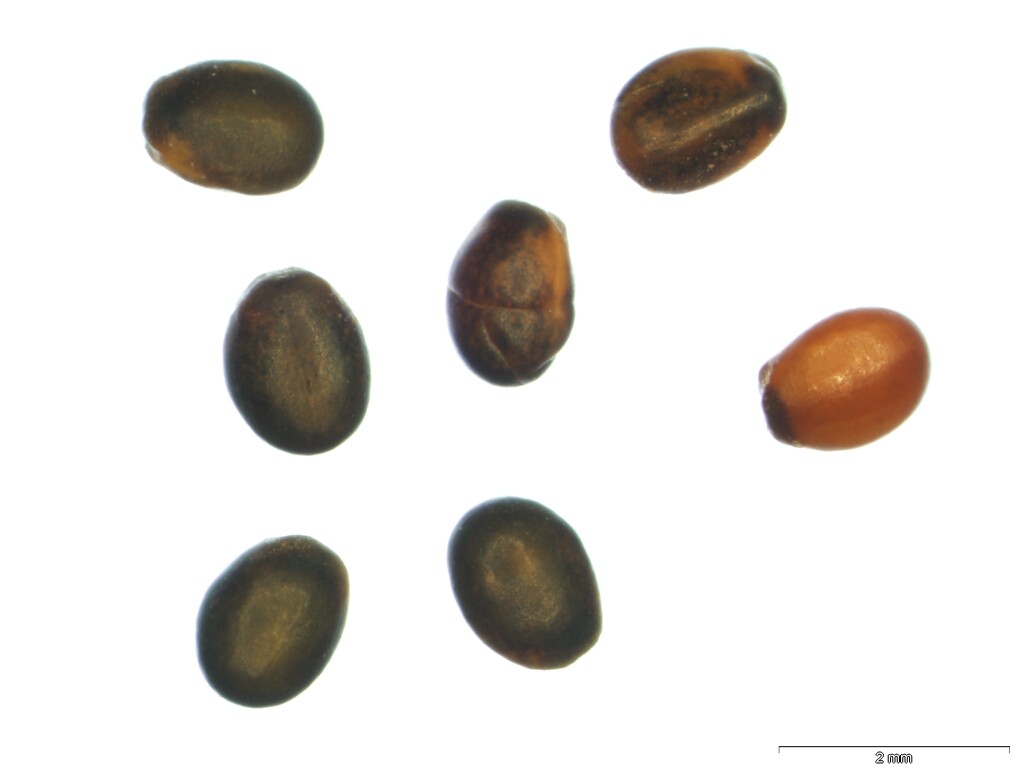Pomaderris paniculosa subsp. paralia
N.G.WalshCompact shrub 1–2 m high, branchlets greyish or rusty stellate-pubescent. Leaves elliptic to obovate, 15–50 mm long, 10–25 mm wide, obtuse, emarginate or truncate, margins entire (rarely minutely serrate); upper surface glabrous; lower surface densely stellate-pubescent, entirely greyish, or with scattered larger rusty hairs, secondary veins apparent; stipules 2–4 mm long. Inflorescence paniculate, usually narrowly pyramidal, terminal and axillary, 1.5–5 cm long; bracts deciduous; pedicels 0.5–4.5 mm long. Flowers cream or greenish, sometimes tinged crimson, externally greyish or rusty, densely stellate-pubescent; hypanthium 1.5–2 mm long; sepals 2–2.5 mm long, persistent; petals absent; disc absent; ovary inferior, summit stellate-pubescent, style branched from near base. Operculum membranous, c. two-thirds mericarp length. Flowers Oct.–Nov.
GleP, Brid, VVP, GipP, OtP, WaP, WPro, OtR. Also WA, SA. Locally common along the coast, in exposed sites along clifflines, dune scrubs etc., often associated with limestone. Sometimes occurring with P. oraria subsp. oraria.
Walsh, N.G. (1999). Pomaderris. In: Walsh, N.G.; Entwisle, T.J., Flora of Victoria Vol. 4, Cornaceae to Asteraceae, pp. 85–109. Inkata Press, Melbourne.
 Spinning
Spinning


